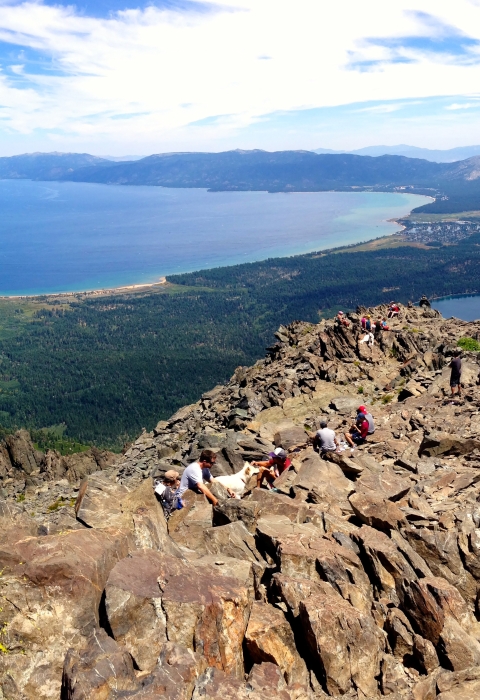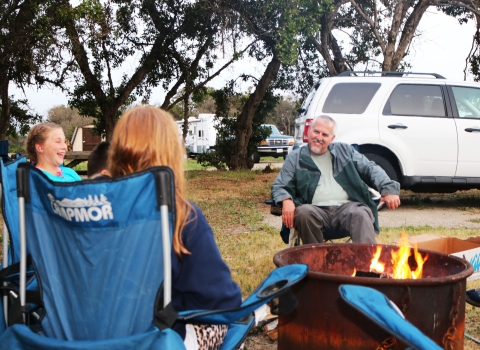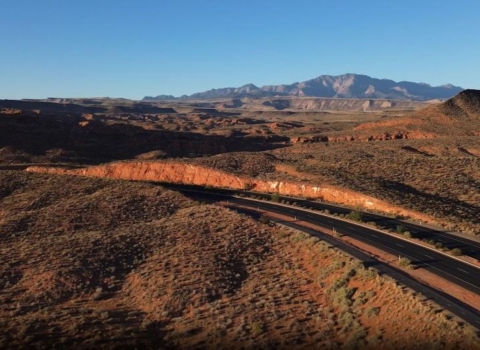SOUTH LAKE TAHOE, Calif. —Today, U.S. Fish and Wildlife Service Director Martha Williams joined partners to announce $3.4 million in funding from the President’s Investing in America agenda to support existing cooperative agreements with The Washoe Tribe of Nevada and California and the Tahoe Regional Planning Agency to prevent and combat the spread of aquatic invasive species invasive species
An invasive species is any plant or animal that has spread or been introduced into a new area where they are, or could, cause harm to the environment, economy, or human, animal, or plant health. Their unwelcome presence can destroy ecosystems and cost millions of dollars.
Learn more about invasive species in Lake Tahoe. The funding from the Bipartisan Infrastructure Law Bipartisan Infrastructure Law
The Bipartisan Infrastructure Law (BIL) is a once-in-a-generation investment in the nation’s infrastructure and economic competitiveness. We were directly appropriated $455 million over five years in BIL funds for programs related to the President’s America the Beautiful initiative.
Learn more about Bipartisan Infrastructure Law represents the continuation of a historic effort dedicated to restoring the Lake Tahoe Basin ecosystem and emphasizes the Administration’s commitment to protecting and restoring our freshwater resources and to inclusive engagement with Tribes, partners, and stakeholders.
“This significant investment from President Biden's Investing in America agenda comes at a crucial time as the Lake Tahoe Basin continues to see threats from the introduction and spread of aquatic invasive species," said U.S. Fish and Wildlife Service Director Martha Williams. "The valued partnerships and Tribal leadership in the Basin provide the collaborative environment needed to restore the habitats of Lahontan cutthroat trout and other native species.”
Through the Bipartisan Infrastructure Law, the Service was awarded a total of $17 million over the course of five years to expand important collaborative efforts for Lake Tahoe’s conservation, restoration and resilience. Today’s announcement marks the third year of funding towards these ongoing restoration projects. The Department has also launched the Invasive Species Keystone Initiative, a key conservation initiative through the Restoration and Resilience framework, that will guide $2 billion in investments from the Bipartisan Infrastructure Law and Inflation Reduction Act.
Aquatic invasive species management is a top priority of the Lake Tahoe Environmental Improvement Program, one of the most comprehensive restoration programs in the nation. In 2022, nearly 17 acres of benthic barriers were installed in Taylor and Tallac Creeks and adjoining marshes to help smother common invasive weeds, like the Eurasian watermilfoil, which can significantly disrupt aquatic ecosystems and crowd out native species.
Located on Washoe Tribe ancestral lands, Lake Tahoe holds significant cultural importance for the Washoe Tribe and is part of the historic range of Lahontan cutthroat trout. Since 1998, the Washoe Environmental Protection Department has worked as a key partner to oversee restoration efforts in the Lake Tahoe watershed.
The Service continues to work closely with the Tahoe Regional Planning Agency and the multi-partner Aquatic Invasive Species Coordinating Committee to identify priority areas for funding under the Bipartisan Infrastructure Law, including two permanent watercraft inspection stations to aid in preventing the introduction and spread of aquatic invasive species. Under the Environmental Improvement Program, Lake Tahoe watercraft inspectors have inspected more than 113,000 boats since 2008.
To strengthen collaboration with the Washoe Tribe of Nevada and California, the project team also identified several projects that will increase Tribal engagement and participation in ecosystem restoration efforts and inform future program priorities with traditional perspective and methods.
Bipartisan Infrastructure Law investments have also contributed to expanding public outreach to multilingual recreators in the Lake Tahoe region through the development of Spanish-language educational and training materials to help raise awareness about combatting the spread of aquatic invasive species.
These project, and more information, may be found on the Service’s website and the Tahoe Regional Planning Agency’s website. Images are available in the photo gallery.
The U.S. Fish and Wildlife Service works with others to conserve, protect and enhance fish, wildlife, plants and their habitats for the continuing benefit of the American people. For more information, visit www.fws.gov and connect with us on social media: Facebook, Instagram, X (formerly known as Twitter), LinkedIn, Flickr, and YouTube.
-FWS-



